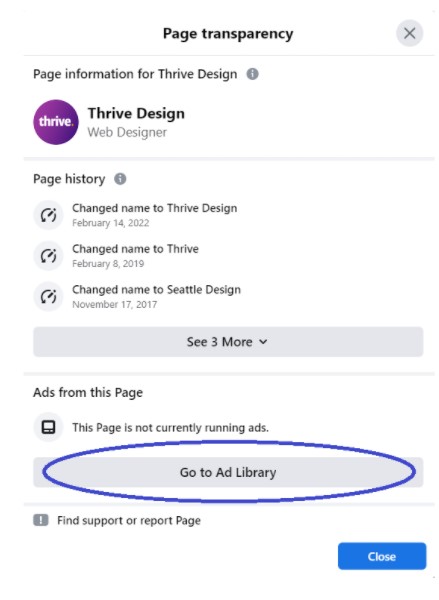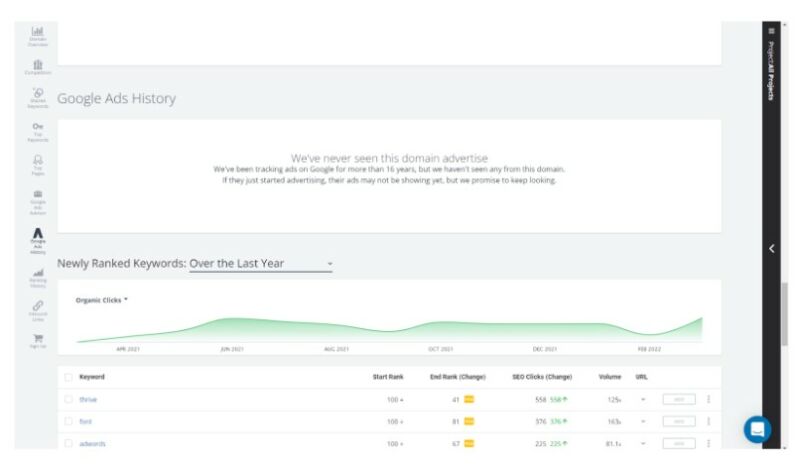
Research
We want to sell more, and to do that we need to know what to say. That’s more than just telling people the “thing” that we want to sell them. It’s giving them a reason to believe you are a better choice than your competition.
It means giving people a reason why they should trust you with their cash.
Thankfully, a little research can do a lot.
In fact, with enough research, you can read your audience’s minds and tell them precisely what they want to hear (I only ask that you be honest with this superpower you’re about to learn).
We’ll be doing two things:
- Digging up dirt on our competition
- Organizing all the positive reviews we have for ourselves.
Review Mining
We’ll use Dotty’s business as an example.
If you have testimonials on your site, you can look through those. In this example, we’ll begin with looking at her Google Reviews.
We are not looking for “Dotty is great. Dotty did a good job.”
We are looking for why people enjoyed their time working with Dotty and why they are grateful they did.
Here’s an example:

This person gives us specifics about what made the experience great.
They highlight how much they appreciate that Dotty is:
- Patient
- Responsive
- Provided great suggestions
- Listened to the customer
- Built a website that
- reflected how the client serves
- the client is proud to promote/send traffic
This is a great start. We’re going to make a list of those specific value items and how the client described their experience working with Dotty.
Now, we read more reviews. We’re looking for patterns here. The most common adjectives are the things that people value in their time working with Dotty.
Reading a handful of these reviews, the pattern that we find is that one of the most common things clients appreciate about working with Dotty is that she listens to who she works with and makes their concerns and ideas feel heard and validated.
This is a great sales proposition to start with.
But compared to her competitors, is it something we can make look unique?
This is where competitor research starts.
Competitor Research
Here’s where we look at how our competitors market themselves.
For this example, we’ll be looking at three different website building agencies:
- Thrive Design
- All Seattle Web Design
- Visual Webz
And for each of these, we’re going to look in four places each to dig up some dirt.
The first is Google Reviews. But instead of searching for positive adjectives, we’re browsing to find the reasons unhappy customers were dissatisfied. (we’ve already shown this using Dotty as the example, so we’ll skip that part here)

Next, we’re going to head over to their Facebook page. On the left side of their business page, you’ll find a section called “Page transparency.”
 You want to click on the “see all” link to the right of that label.
You want to click on the “see all” link to the right of that label.
Next, you want to click on “Go to Ad Library,” as shown below.
The resulting page will show you what ads they have ever run on Facebook.
In this case, we can see that this competitor has never run ads on Facebook.
However, if they had, we would be writing down a list of what qualities about working with them they are trying to pull people in with.
For example, if they ran an ad that said, “we have friendly, easy to work with reps, who get you the website you’re dreaming of.”
We would make a list noting:
- Friendly/easy to work with
- Quality website build
We will do this for each competitor in our area.
Next, we go to the competitor’s website.
Remember when we established some potential sales propositions for Dotty based on her reviews? Here, we’re looking for value propositions that the competitor is already using.
If they are doing this, we should be able to identify them on the home page.
Here’s what we’re looking at:

Do you see any value propositions here..? I don’t. And that makes it easy for us.
This is the equivalent of trying to sell a vacuum cleaner to somebody by saying, “I sell vacuums.”
If someone is shopping around looking for who the better option is… they’ll lose this fight when confronted with our value proposition of “When you work with Dotty, you know your input, concerns, and ideas will be valued and considered, providing a website that not only gets the job done but that you can be proud of knowing it represents your business and personality.”
That’s a lot more convincing than “we sell websites.”
But we still have one more big player to check to make sure we’re positioning ourselves well.
Google Ads is harder to look at because, by its nature, the ads only show up when you type into google and look for what they are advertising. And that only works IF they’re advertising!
That’s why we will use the free browser version of a tool called SpyFu.
When you load up the home page for SpyFu, you’ll want to type in the website address of the competitor you are researching in the circled area shown below:

This will take you to an analytics report starting with Organic Keywords (SEO). We’re not interested in that section for this.
We’re going to scroll down about 3/4ths through the page to where we find “Google Ads History.” It will look like this:

And in this case, we’re in luck. We can see that there is no data here for the competitor, and because of this, we know that they also have never run Google Search ads.
So far, this is looking excellent for Dotty.
In the case of Thrive Design, at no point in their marketing are they using a value proposition.
We repeat these steps for the other competitors and continue building our list of what people are upset with from them and what value propositions they use to market themselves.
Writing the Ad
We’ve done our research, and now it’s time to “write” the ad. The trick is there’s very little writing involved because our audience already gave us everything we need to assemble the ad copy (text) just like Lego blocks, reassembling what we already found.
We know from our competitor research that there are no competing messages. If someone else was claiming on their website home page or ads that “they made their customer’s input feel valued,” we might have an obstacle because we’d be making the same claim, and it would mainly come down to who had the bigger budget to outspend the other.
In that situation, we would need to use a different positive that our reviews told us people appreciate working with her.
But in this case, we know that none of Dotty’s competitors are trying to compete in selling that value.
So that’s precisely what our ad will say.
Pulling text directly from the review we looked at when we first started and reorganizing it a bit, the ad reads:
“Website Design that puts you first. Your ideas will be valued, your personality will shine through, and you’ll be proud to show people YOUR business’s website after we’re finished working together.”
And side-by-side, that ad will win Dotty the lead over “we build websites” 100% of the time.

Guest Post by Dustin Saksek
Dustin is the owner of Strongarm Digital Marketing, LLC in the greater Seattle area. He is a local Ad expert as well as a great copywriter for businesses who want to stand out. You can connect with Dustin at:
dustin@
And LinkedIn: dustinsaksek












